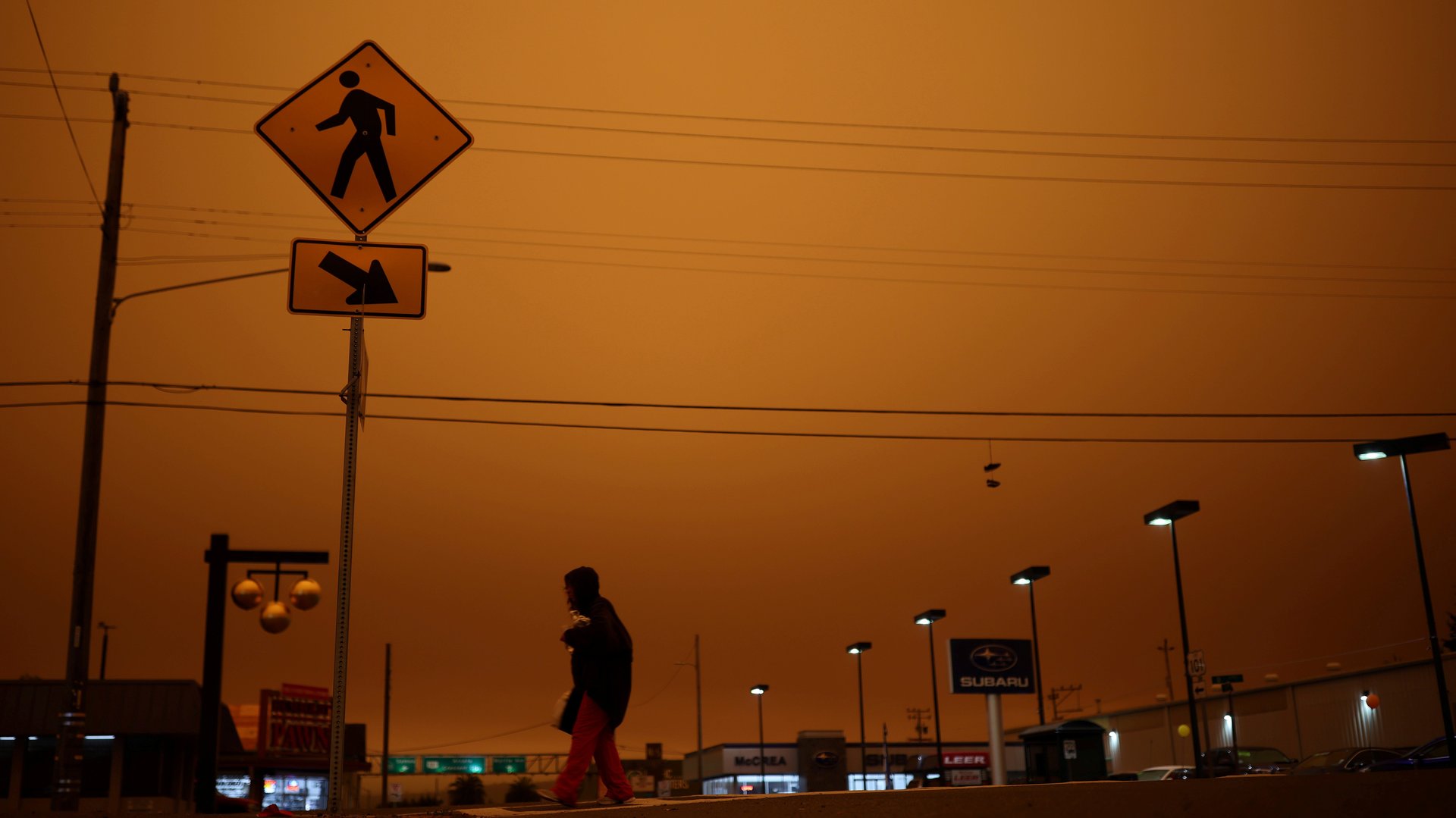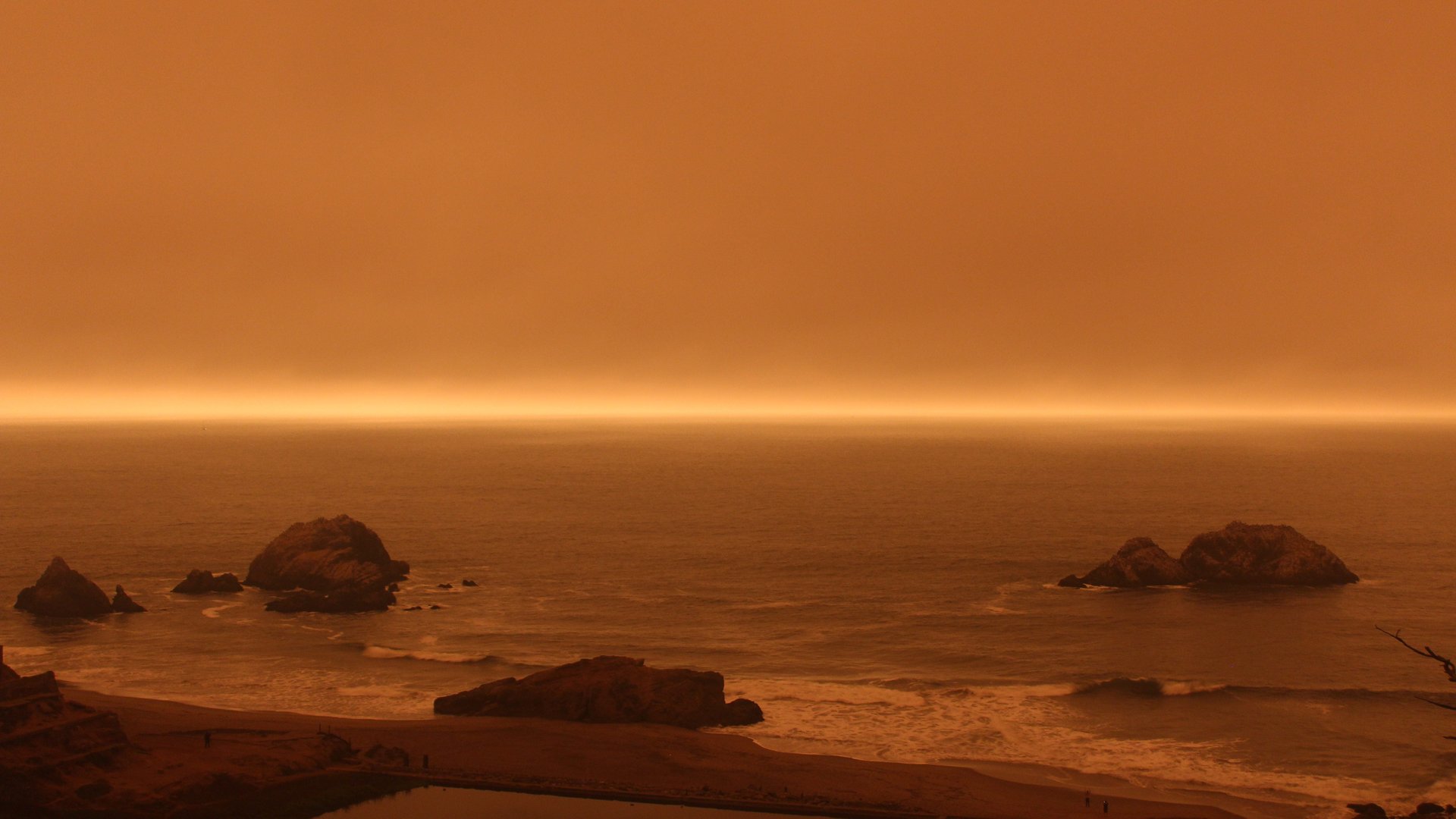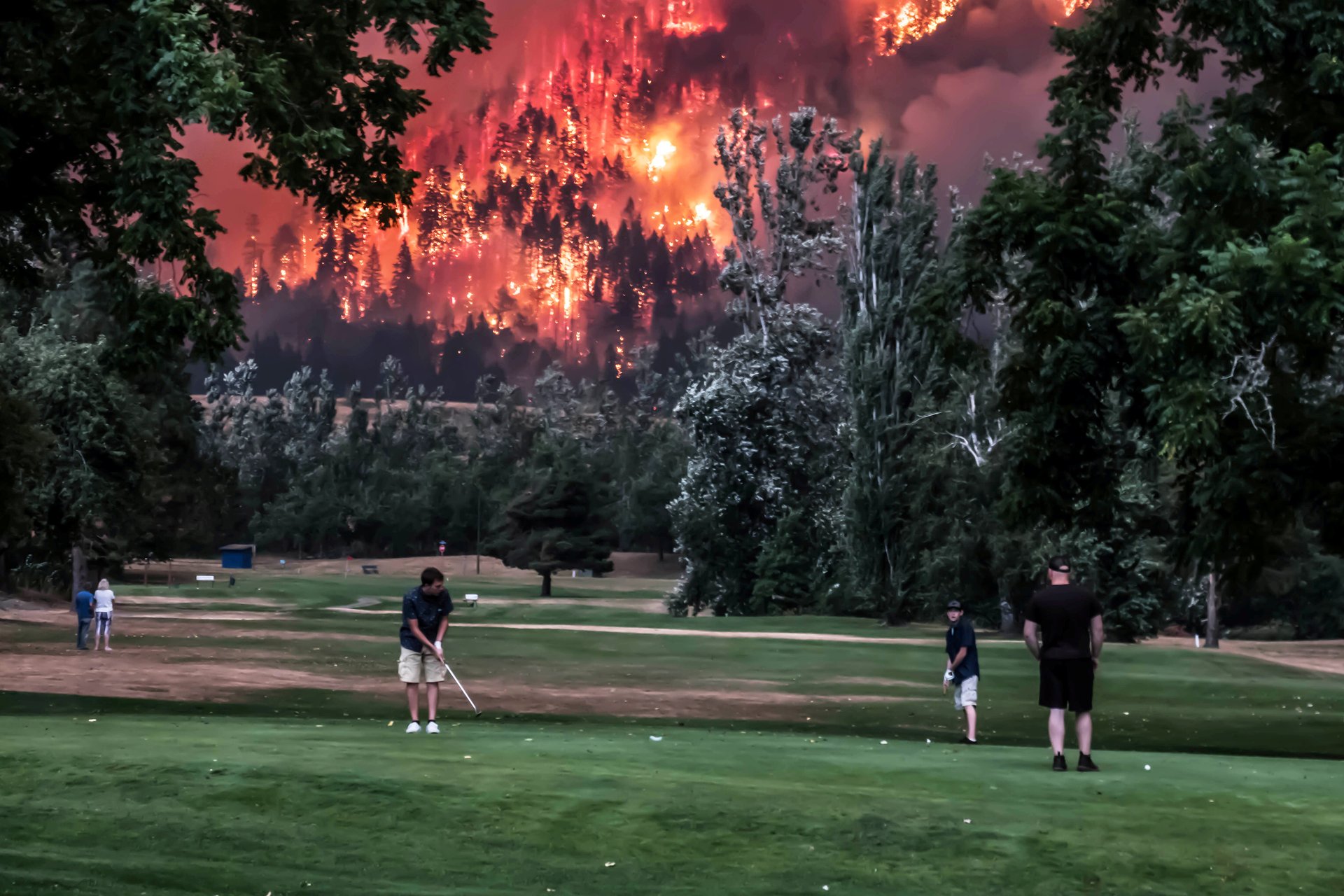How to breathe easier in America’s Smoke Belt
Smoke is transforming life in American cities. As I type this, smoky air from the Sierra Nevada mountains is pouring into San Francisco, casting a deep orange haze across the city, as well as much of the American west. Most days, the morning fog carries the smell of the lightning-sparked fires, an acrid brew of millions of incinerated trees and buildings now burning across California.


Smoke is transforming life in American cities. As I type this, smoky air from the Sierra Nevada mountains is pouring into San Francisco, casting a deep orange haze across the city, as well as much of the American west. Most days, the morning fog carries the smell of the lightning-sparked fires, an acrid brew of millions of incinerated trees and buildings now burning across California.
For one of America’s biggest states, it’s the fourth decade of an accelerating disaster. More than 50 firefighter’s lives and $15 billion in structures have been lost to wildfires since 2015, more than the previous 30 years combined. An area roughly the size of South Carolina has gone up in flames, claiming more lives, homes, and wildlands than ever before.

In northern California, western Oregon, and parts of the Great Plains, these fires—fueled by climate change—are creating a new normal. Even as air quality improves in much of the US, it’s getting worse across much of the west, as wildfires pump dangerous levels of soot and smoke into the air most years.
Get ready for life in the Smoke Belt.
The impacts of wildfire smoke
Since 1984, climate change has roughly doubled the cumulative area burned in the western US, according to scientists at the University of Washington. Already this year, with traditional fire season weeks away, 2 million acres and 3,300 buildings have burned in California alone. Models suggest all the progress reducing air pollution from human sources during this time has been swamped by the wildfires engulfing the region.
By mid-century, more than 82 million people in the US, 25% of the population, are likely to experience repeated “smoke waves,” at least two consecutive days with high levels of PM 2.5, a particularly dangerous form of tiny air pollution particulates, according to researchers in the journal Climatic Change.
On the worst days, parts of the western US resemble some of the most polluted cities in the world from Beijing to Mexico City. During the Camp Fire in 2018, the measured air quality in northern California was likely the worst in the world.

That has massive health implications. The most dangerous sooty particles, PM 2.5, are small enough to slip through the body’s defenses, enter the bloodstream, and wreak havoc on our organs. Heart attacks, asthma, pneumonia, bronchitis, COPD, and heart failure are all attributed to the pollutant. Most susceptible are children, those over 65 years old, African Americans, and people with underlying chronic diseases.
California residents—especially those who fall in those susceptible groups—are already experiencing the future predicted for millions of people in the American west. Since Aug. 14, the number of air quality alerts issued each day in the Bay Area have hit the longest streak on record, and the fires could smolder for months longer.
The Smoke Belt is going to have to learn to adapt.
What can be done about smoke?
In the past, people could deal with a few days of poor air. Now, residents of the smoke-ridden American west will have to prepare for weeks or even months.
“The challenge is the duration of the high smoke levels that come with severe wildfire seasons,” says US Forest Service spokesperson Kaari Carpenter. “Becoming ‘smoke ready’ as a nation prepares one for poor air quality.”
Those who live in the worst-affected areas have already started to adapt. Even before the pandemic, after California’s Bay Area endured a succession of brutal fire seasons, I had masks and air purifiers on hand.
But to prepare for the long haul, the west coast of the US could do well to pay attention to a region that is already experiencing America’s fate: Asia. The continent’s megacities, from Delhi in India to China’s capital Beijing, have been battling choking smog for decades, a toxic mix of vegetation fires and industrial pollution.
Air pollution has already transformed daily life for millions of Chinese, says Ma Jun, director of China’s Institute of Public & Environmental Affairs, an environmental non-profit in Beijing. At its worst in 2013, deteriorating air was blamed for more than 1 million premature deaths and a 10% decline in GDP. Although air quality has since improved thanks to government regulations, says Jun, the period left its mark.
“Checking the air quality index became a daily necessity,” said Jun, “just like checking the weather forecast.” Residents were regularly forced to stay inside, and high-filtration masks (similar to N95s in the US) became standard attire. For those who could, air purifiers were installed in every room and high-end hotels and public spaces advertised cleaner air. Parents battled with schools to keep children indoors, even paying to install air purifiers for classrooms unable to afford them.
The situation is similar in cities like New Delhi. Last year, due to crushing industrial pollution and farmers burning fields, concentrations of PM 2.5 in the Indian city broke the air quality scale after surpassing 999. HR Venkatesh, director of a media organization in New Delhi, copes by moving air purifiers around his house, and wearing a gas mask outdoors when levels are particularly high.
These kinds of measures may soon become commonplace in the US. Venkatesh spent part of last year at Stanford University during California’s wildfire season. “When I breathed in, it was exactly like Delhi,” he said by phone. “The feeling, the smell of the air, it was exactly the same.”
How to protect against smoke
Government agencies from the Environmental Protection Agency (EPA) to county health departments are getting ready for the onslaught of high temperatures and polluted air that will take a toll on those most vulnerable. Here are some of the top steps you can take if you’re living in the new Smoke Belt.
Track air quality and fires: A real-time fire and smoke map by the US government tracks active fires, as well as air quality information. The Air Now website, operated by the EPA, gives an air quality measurement for local zip codes, a service also provided by private weather apps.
Prepare ahead of time to avoid going out: Following air quality forecasts should allow people to stock up to avoid going out when smoke descends. That means buying medications, groceries, and other essentials.
Stay inside: Reduce activity and avoid going outdoors. Even moderate exercise can raise air intake by up to 20 times compared to resting. This lodges more pollution deeply into lungs, and elevates acute and long-term health risks.
Wear masks: Cloth face coverings, which can help slow the spread of Covid-19, don’t offer much protection (pdf) against wildfire smoke. If you have to go outside, the EPA recommends (pdf) N95 or P100 masks. These have been in short supply due to the pandemic (healthcare workers should get priority), but those experiencing repeated smoke waves may want to invest.
Create a clean room: Air recycling and purifying systems can be set up in bedrooms, and portable units can be moved to where they are most needed. Those with air conditioning can sometimes recycle indoor air using a HEPA or MERV-13 (or higher rating) filter. Cheap, do-it-yourself box fan filters work as well (but shouldn’t be left unattended). Staying indoors without closing windows and filtering the air will be of limited usefulness: Indoor concentrations of fine particles can reach 70% to 100% of outdoor levels, according to the EPA. Once air quality improves (even for a short time), airing out homes can cut indoor air pollution.
Clean air shelters: When indoor air can’t be maintained at home, designated clean air shelters in commercial buildings, schools, shopping malls, libraries, or any place with effective air conditioning and filtration are recommended. That’s difficult during the pandemic, but the USFS recommends finding locations through your local government. This is even more crucial when the mercury rises (several cities in California have reported their hottest temperatures ever topping 120°F this month). Cool and clean air will save the lives of the most vulnerable.
Correction: This article previously mistated that California, not Alaska, is the largest US state.